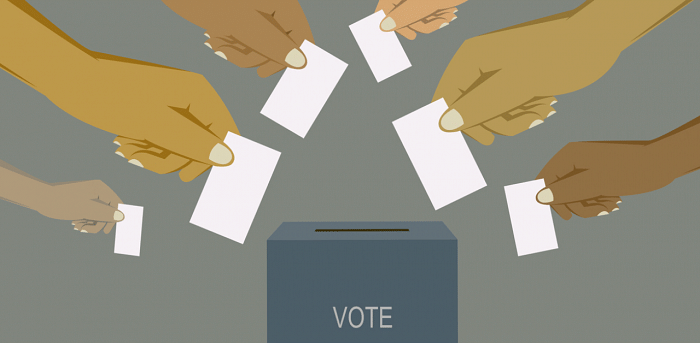
The election manifestos are out, and the three major parties, the BJP, Congress, and JDS, are going all out to woo Karnataka’s voters for the coming assembly elections on May 10. With 224 seats at stake in the Vidhana Sabha, each party is looking at getting a majority, and the outcome in the state could well portend what happens in the upcoming Lok Sabha elections in 2024.
But how do the political parties’ manifestos weigh in on the three pillars of sustainability: economic viability, environmental protection, and social equity, also referred to as the three P’s—people, planet, and profit? Do the manifestos make promises of better educational opportunities, sustainable livelihood opportunities, and better living conditions for all their people? Do the manifestos promise to reduce and reverse the ill effects of climate change in the state? Do the manifestos promise motorable roads, cycle tracks, and electric vehicles to reduce pollution, waste management, solar power, and rejuvenation of the existing lakes?
Long before the political parties made their manifestos public, NGOs and citizen groups released their own manifestos with wish lists for protecting the state’s ecology and environment. Greenpeace India, along with the Council for Active Mobility, came up with a 10-point agenda that included dedicated cycle lanes and footpaths, bicycle parking facilities, increased public transport service with additional buses, plus electric buses; dedicated bus lanes with better amenities, CCTV cameras, and free or subsidised passes to women, minors, and the disabled; and to declare low emission zones at transit bus and train stations to improve air quality and reduce carbon emissions.
Then a conglomerate of citizen groups made a plea to save Bengaluru’s lakes and consider environmental and ecological aspects, including rainwater harvesting, groundwater recharge, and flood mitigation. Drafted by conservationists Ram Prasad and Nagesh Aras, the demands included the constitution of district and state-level lake committees as per the 2012 Karnataka High Court orders; strengthening the Karnataka Tank Conservation and Development Authority (KTCDA) by reconstituting its Technical Approval Committee (TAC) with the inclusion of environmental and ecological experts; a survey of all water bodies; and stopping the construction of roads/bridges in the buffer zones with a zero-tolerance policy towards encroachments.
The first-time voters—nearly 11 lakh 18-year-olds who became eligible to cast their vote on March 10—came up with their own lists. As most surveys have been pointing out, this 18–24-year-old group of voters could well be the game changer for political parties trying to avoid a hung assembly. As discovered by the poll managers of the political parties, young people are not influenced by money, power, or freebies, nor are they ideologically attached to any single party. What could tip their vote for a candidate are promises of better infrastructure, climate change mitigation, and higher education opportunities.
So naturally, all the political parties have peppered their manifestos with several welfare schemes and tried to cover all the asks from stakeholders. While the BJP has promised to strengthen Karnataka’s pillars of progress—economic strength, social cohesiveness, cultural and civilizational growth, protection of mother nature, and nationalism—the Congress in turn has promised to build brand Karnataka and make the state number one in the country, and the JDS has come up with its own agenda.
Unemployment benefits, regularisation of jobs, better wages, and job creation opportunities for youth have all figured in the manifestos of the three parties, as have a slew of programmes for farmers and women. While the Congress has promised an education policy for the state, the BJP and JDS have promised upgradation of government schools.
From the rejuvenation of lakes to better infrastructure in villages, from solar power to cycle tracks, electric vehicles, free EVs and cycles for girls, and free bus rides for women, the parties have outdone themselves trying to please everybody.
So, going back to the three pillars of sustainability—economic viability, environmental protection, and social equity—how economically viable are the various welfare schemes the parties have come up with to create social equity? As much as social equity is one of the pillars of sustainability, so are economic viability and environmental protection. What is needed is a balance between the three pillars.
The voters, whether rural, urban, poor, middle class, or rich, all want the same thing: opportunities to earn
a decent livelihood and improve the living conditions of their families.
Finally, who wins the race will be known on May 13, but what we can hope for is that whichever party comes to power keeps its promises and works towards creating a vibrant and self-reliant state.
(The writer is a journalist and author.)